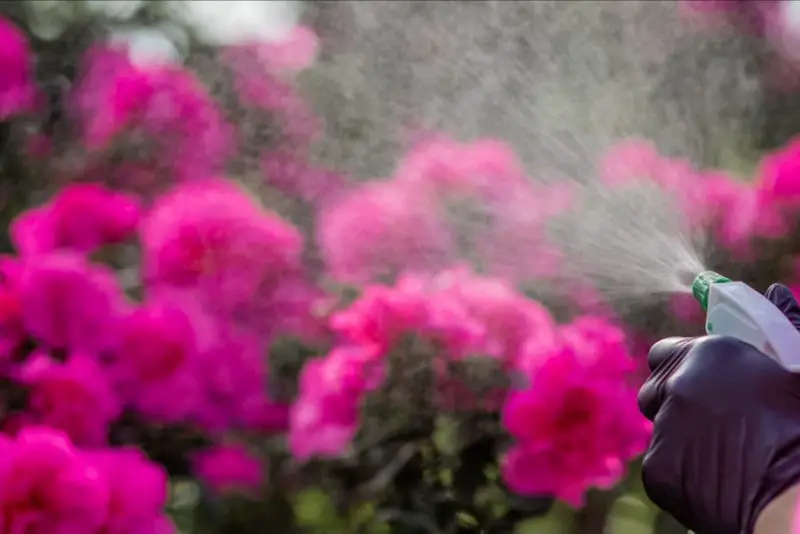Azaleas are among the most admired flowering shrubs, celebrated for their radiant blooms and lush foliage that bring color and life to any garden. Yet, despite their beauty, azaleas are sensitive plants that demand careful watering to remain healthy. Too much water can suffocate their shallow roots and invite root rot, while too little can cause wilting and stunted growth. Finding the perfect balance is the secret to keeping them vibrant throughout the year. When you understand how often to water azaleas, you create the foundation for continuous blooming and long-term vitality.
Proper watering is about more than frequency—it’s about understanding the plant’s needs in different conditions. Soil type, sunlight exposure, climate, and season all influence how much water an azalea requires. These shrubs prefer consistently moist but well-drained soil, never soggy or dry. Whether planted in the ground or grown in containers, adjusting your watering routine according to these factors ensures your azaleas stay resilient through heat, cold, and rain. In this guide, you’ll learn how to master watering techniques that promote strong roots, prevent stress, and keep your azaleas blooming beautifully all year long.
Understanding Azalea Water Needs

Water is one of the most critical factors influencing the health and growth of azaleas. These plants have shallow, fibrous root systems that sit close to the soil surface, making them highly sensitive to moisture fluctuations. Unlike deep-rooted shrubs, azaleas depend on consistent soil dampness to thrive. When the top few inches of soil dry out completely, the roots quickly lose access to oxygen and nutrients, leading to wilting or leaf drop. On the other hand, standing water or overly wet soil can suffocate the roots, promoting fungal infections like root rot. Striking the right balance between moisture and drainage is therefore essential.
Azaleas prefer moist but well-drained soil that mimics their natural woodland environment. In their native habitats, they grow under trees where fallen leaves enrich the soil and help retain moisture without causing saturation. Recreating this balance in your garden requires using organic mulch, such as pine bark or compost, which regulates temperature and conserves moisture. When watering, it’s best to do so deeply and infrequently rather than shallowly and often. Deep watering encourages the roots to spread widely, improving stability and resilience against drought.
Climate, soil composition, and plant age also affect watering frequency. Newly planted azaleas need more frequent watering until roots establish, while mature shrubs can handle slightly longer intervals. Sandy soils drain faster, requiring more frequent watering, whereas clay soils hold moisture longer but must be monitored to prevent waterlogging. The key is consistency—keeping the soil evenly moist at all times. Understanding these factors allows gardeners to tailor watering habits that suit their environment, ensuring azaleas remain healthy and bloom beautifully throughout the year.
How Often to Water Azaleas Based on Season
Azaleas have changing water needs throughout the year, depending on temperature, rainfall, and growth stage. During spring, when new shoots and flower buds develop, the plants require consistent moisture to support both foliage and blooming. Water deeply once or twice a week, depending on your climate and soil drainage. The goal is to keep the top few inches of soil evenly moist without letting it become soggy. This steady supply of water ensures the plant directs enough energy toward root growth and flower formation, leading to fuller and longer-lasting blooms.
In summer, watering frequency often increases as higher temperatures and intense sunlight accelerate evaporation. Azaleas are prone to stress in dry, hot conditions, so it’s best to water early in the morning to minimize loss. Deep watering every four to five days is typically sufficient, but adjust based on rainfall and humidity. Mulching around the base helps retain moisture and keeps the roots cool. Container-grown azaleas may need watering every two to three days during heat waves since pots dry faster than ground soil. Always check moisture levels before watering again to prevent overwatering.
As fall approaches and growth slows, gradually reduce watering. The soil should remain moist but not as wet as in spring or summer. In winter, when azaleas enter dormancy, limit watering to once every two weeks or only during extended dry spells. Overwatering during cold months can lead to root rot. Adjusting watering frequency to seasonal changes keeps the plant balanced, prevents stress, and supports long-term health. By syncing your watering habits with seasonal rhythms, you ensure that azaleas remain lush, strong, and ready to bloom again each year.
How Soil Type Affects Azalea Watering Frequency
Soil composition plays a major role in determining how often azaleas should be watered. These shrubs grow best in loose, well-aerated, and slightly acidic soil that drains efficiently while retaining some moisture. In dense clay soils, water tends to linger around the roots, limiting oxygen and creating a breeding ground for fungal diseases such as root rot. Gardeners with clay-heavy soil should water less frequently but more deeply, allowing time for the excess moisture to drain completely before watering again. Amending the soil with compost, pine bark, or sand can improve drainage and create a more stable moisture environment for azaleas.
Sandy soils, on the other hand, drain too quickly and often dry out before roots can absorb sufficient moisture. In these conditions, azaleas need more frequent watering, sometimes every two to three days during warm, dry periods. Adding organic matter like peat moss or shredded leaves helps increase water retention while maintaining the soil’s natural acidity. The organic matter acts like a sponge, holding moisture without making the soil soggy. Regular mulching further slows evaporation and keeps moisture levels consistent, especially during the summer heat.
Loamy soil, a balanced blend of sand, silt, and clay, offers the ideal structure for azaleas. It drains well while storing enough moisture for steady absorption. In loamy conditions, watering once or twice a week is typically sufficient, though this can vary with temperature and rainfall. Regardless of soil type, always monitor the top few inches of soil before watering. If it feels dry to the touch, it’s time to water again. Adapting watering frequency to your soil’s characteristics ensures azaleas receive consistent hydration without the risks of overwatering or drought stress.
How Climate Influences Watering Needs for Azaleas
Climate greatly determines how often azaleas should be watered, as temperature, humidity, and rainfall all affect soil moisture levels. In cool, temperate regions, azaleas generally need less frequent watering because evaporation rates are lower. Once or twice a week is often enough to keep the soil evenly moist. Frequent rainfall in these areas can naturally support the plant’s hydration needs, though gardeners should still monitor drainage to prevent soggy conditions. Overwatering in cooler climates can be just as damaging as drought, especially when soil remains wet for long periods. Ensuring good drainage and avoiding waterlogged roots are crucial in these environments.
In hot and dry climates, azaleas require more attention to prevent dehydration. High temperatures and low humidity increase water loss through both soil evaporation and leaf transpiration. In such conditions, watering every two to three days may be necessary, especially for potted azaleas or those in sandy soil. Early morning watering is ideal because it allows moisture to penetrate deeply before the day’s heat sets in. Mulching becomes even more critical in warm regions, as it helps keep soil temperatures stable and reduces evaporation. Regularly checking soil moisture prevents drought stress and leaf scorch.
In humid tropical or coastal areas, frequent rainfall may reduce the need for manual watering, but excess moisture brings its own challenges. Continuous wetness can lead to fungal issues, so it’s important to ensure air circulation and proper drainage. Avoid watering if rain is frequent or soil remains wet for more than two days. In these climates, less is often more. By aligning watering habits with the local climate, gardeners can maintain an ideal balance of moisture and oxygen, ensuring azaleas stay healthy, resilient, and ready to bloom beautifully each year.
How to Tell If Your Azaleas Are Overwatered or Underwatered
Knowing whether your azaleas are getting too much or too little water is crucial to keeping them strong and blooming. Overwatering is one of the most common mistakes gardeners make. When azaleas receive excessive water, the soil becomes compacted, depriving roots of oxygen. As a result, they begin to suffocate, weakening the entire plant. The first symptoms are yellowing leaves, especially on the lower branches, followed by soft stems and leaf drop. The soil may also smell sour or feel constantly soggy, signaling the onset of root rot. If unchecked, the roots darken, decay, and lose their ability to take up nutrients, eventually killing the plant. Preventing this requires well-draining soil and deep but infrequent watering rather than daily soaking.
Underwatering produces opposite but equally damaging symptoms. When deprived of moisture, the azalea’s shallow roots quickly dry out, leading to brittle leaves, curled edges, and drooping branches. Buds may shrivel before opening, and flowers that do appear often fade prematurely. The soil around the base feels dry, cracked, and may even pull away from the pot or bed edges. Fortunately, underwatered azaleas often recover if rehydrated gradually. Deep watering, rather than surface sprinkling, allows moisture to reach the root zone where it’s most needed. Adding mulch helps maintain consistent soil dampness and prevents rapid drying during hot or windy conditions.
To keep azaleas balanced, monitor soil moisture regularly. Insert your finger two inches into the ground; if it feels cool and slightly damp, the plant is properly hydrated. If it’s dry, water immediately; if it’s wet or sticky, let it dry before watering again. Adjust your routine as seasons change, since rainfall, sunlight, and humidity all affect water demand. Observing your plant’s leaves and soil texture helps you catch problems early, ensuring azaleas remain healthy, resilient, and full of life year-round.
Watering Techniques to Keep Azaleas Healthy
Mastering proper watering techniques is essential for growing vigorous and long-living azaleas. The best approach is deep, slow watering that allows moisture to penetrate into the root zone rather than just wetting the surface. Shallow watering encourages roots to stay near the top layer of soil, making the plant more vulnerable to drought. Using a soaker hose or drip irrigation system delivers water gradually, ensuring even coverage without runoff. This method also keeps the foliage dry, helping prevent fungal issues that can arise from constant moisture on leaves. Watering early in the morning gives the plant time to absorb moisture before temperatures rise, reducing evaporation loss.
Consistency is key to keeping azaleas hydrated without drowning them. Instead of watering by a fixed schedule, focus on the soil’s moisture level. Check it regularly and water when the top two inches begin to dry. It’s better to water thoroughly once or twice a week than to sprinkle lightly every day. This encourages deeper root development and better drought resistance. Avoid watering during midday heat, as rapid evaporation wastes water and leaves roots thirsty. During rainy periods, pause watering altogether to prevent saturation and root stress.
Mulching complements proper watering by stabilizing moisture and temperature. A two- to three-inch layer of organic mulch, such as pine needles or bark, helps prevent water from evaporating too quickly. It also reduces weed growth, which can compete with azaleas for moisture. Regularly refreshing the mulch ensures lasting benefits throughout the year. With steady, mindful watering techniques, azaleas remain strong, their leaves stay glossy, and their blooms reach their full, brilliant potential season after season.
How to Water Potted and Indoor Azaleas
Potted Azaleas
Potted azaleas require more frequent and careful watering than those grown in the ground because pots dry out faster and hold less soil volume. These plants prefer evenly moist, well-draining soil that allows air to circulate around their shallow roots. Always choose a container with several drainage holes and use an acidic potting mix enriched with organic matter such as peat moss or pine bark. Water deeply until it flows out from the bottom, ensuring that all roots receive moisture. Allow the top inch of soil to dry slightly between waterings, as keeping it constantly wet can lead to fungal infections or root rot. During warm months, you may need to water daily, especially if the plant sits in direct sunlight.
The type of container and its placement also affect watering frequency. Clay pots dry faster than plastic ones because they allow moisture to evaporate through their porous walls. Azaleas placed in full sun or windy areas will also lose water more quickly than those in partial shade. Applying a layer of mulch on top of the soil helps stabilize moisture levels and prevents temperature fluctuations. Reduce watering slightly during winter but never allow the soil to dry completely. Consistent deep watering, good drainage, and mulching create the perfect environment for potted azaleas to produce glossy foliage and vibrant flowers all year long.
Indoor Azaleas
Indoor azaleas need precise watering to thrive since indoor air tends to be drier and warmer than outdoor conditions. Their soil should remain consistently moist but not waterlogged. Check the moisture every two to three days by pressing your finger into the soil. If it feels dry about an inch deep, water until it drains gently from the bottom. Always empty the saucer afterward to prevent stagnant water from suffocating the roots. Rainwater or filtered water is ideal, as hard tap water can raise the pH and limit nutrient absorption. During active blooming, the plant may need slightly more water to sustain flower production.
Humidity control is essential for indoor azaleas. Central heating and air conditioning quickly reduce air moisture, causing leaves to curl or brown. To maintain ideal humidity, place the pot on a tray of pebbles with water or use a room humidifier nearby. Light misting keeps leaves fresh but should be avoided during flowering to prevent petal spots. Position the plant near a bright, east-facing window for gentle morning sunlight, and rotate it weekly for even light exposure. Balanced moisture, humidity, and light conditions keep indoor azaleas vigorous, ensuring they bloom profusely and maintain their beauty well beyond the outdoor season.
Common Watering Mistakes Gardeners Make with Azaleas
Watering Too Frequently
One of the most common mistakes gardeners make with azaleas is watering too often. Because azaleas have shallow roots, many people assume they need daily watering, but this can do more harm than good. When soil remains constantly wet, it limits oxygen around the roots, causing them to suffocate. Over time, this creates the perfect environment for root rot and fungal diseases. You may notice yellowing leaves, soft stems, or a musty smell coming from the soil—clear signs of overwatering. The best way to avoid this is to check soil moisture before watering. Only water when the top inch feels slightly dry.
Overwatered azaleas also tend to lose their ability to absorb nutrients, leading to pale foliage and poor flowering. To correct the issue, improve drainage by adding organic material like pine bark or compost to the soil. Avoid watering late in the evening, as overnight dampness encourages fungal growth. It’s better to water deeply once or twice a week rather than applying small amounts every day. This approach allows roots to breathe and promotes stronger, deeper growth, helping azaleas remain healthy even during hot weather.
Ignoring Drainage Conditions
Ignoring drainage is another mistake that often leads to azalea decline. These plants naturally grow in woodland settings with loose, well-drained soil. When planted in heavy clay or compacted soil, water collects around their roots, cutting off oxygen and causing rot. Gardeners sometimes misinterpret this stress as drought and water even more, worsening the problem. Proper drainage is essential to maintaining the delicate balance of moisture and air that azaleas require. If water tends to pool after rain or irrigation, the site needs to be improved before planting.
Creating raised beds or amending garden soil with sand, compost, or peat moss can significantly enhance drainage. For potted azaleas, always ensure containers have several drainage holes, and never let them sit in saucers of standing water. During wet seasons, it’s best to water less frequently and rely on natural rainfall. Observing how long soil stays moist after watering helps refine your schedule. Good drainage encourages healthy roots that absorb nutrients efficiently, leading to more vigorous growth and brilliant blooms every spring.
Underwatering During Hot Seasons
Underwatering is a frequent problem during hot, dry weather when azaleas lose moisture faster than they can replace it. These shrubs have shallow roots that rely on consistent soil dampness, and even short dry periods can cause visible stress. In midsummer, high temperatures and intense sunlight cause soil to dry rapidly, leading to drooping leaves, brittle stems, and early flower drop. Many gardeners underestimate how quickly moisture evaporates during heatwaves, especially in sandy or container soil. When deprived of water, azaleas go into survival mode, halting growth and sacrificing buds to conserve energy.
To prevent underwatering, check soil moisture every few days during summer and water deeply when the top two inches feel dry. Morning watering is best because it allows moisture to soak in before the heat intensifies. Applying a thick layer of organic mulch helps retain water and insulate roots from extreme heat. Potted azaleas may need daily watering in hot climates since containers dry faster. Regular hydration keeps foliage lush and buds developing, ensuring the plant continues to thrive even through challenging summer conditions. Consistency is key—azaleas that receive steady watering recover faster and bloom more vibrantly.
Using Hard or Chlorinated Water
The quality of water used for azaleas plays a critical role in their long-term health. Hard or heavily chlorinated water can alter soil chemistry, gradually raising its pH level and reducing acidity. Since azaleas are acid-loving plants, they begin to struggle when soil becomes more alkaline. Over time, this imbalance interferes with nutrient uptake, causing yellowing leaves, weak stems, and fewer blooms. The minerals in hard water, particularly calcium and magnesium, accumulate in the soil, making it harder for the roots to absorb iron—one of the essential nutrients for vibrant foliage.
To maintain proper acidity, use rainwater, distilled water, or filtered water whenever possible. Collecting rainwater in barrels is an eco-friendly and natural option that perfectly suits azaleas’ needs. If tap water must be used, allow it to sit overnight before watering so chlorine can dissipate. For gardeners in areas with very hard water, adding organic materials like peat moss or pine needles can help counteract alkalinity. Consistent use of the right water quality preserves soil balance, ensuring your azaleas remain green, strong, and full of radiant blossoms.
Seasonal Watering Tips for Azaleas
Spring
Spring is the most critical season for watering azaleas, as plants awaken from winter dormancy and start forming buds. During this phase, azaleas need consistent soil moisture to fuel both leaf and flower development. Water deeply once or twice a week, depending on your soil type and rainfall. Avoid light surface watering since it encourages shallow root growth and makes the plant more sensitive to drought. Instead, allow water to soak several inches into the soil so that the roots receive adequate hydration. Mulching with pine needles or shredded bark helps retain moisture and maintain the slightly acidic soil conditions azaleas love.
For newly planted azaleas, watering frequency should increase during the first month until the roots establish. Check the soil regularly by touching the top few inches—it should remain moist but never soggy. Early morning watering is best because it allows leaves to dry before nightfall, reducing disease risk. During windy or warm days, monitor moisture more closely since spring weather can shift quickly. Maintaining balanced hydration during this period ensures azaleas grow strong roots and produce fuller, longer-lasting blooms that mark the start of a healthy growing season.
Seasonal Watering Tips for Azaleas
Spring
Spring is the most critical season for watering azaleas, as plants awaken from winter dormancy and start forming buds. During this phase, azaleas need consistent soil moisture to fuel both leaf and flower development. Water deeply once or twice a week, depending on your soil type and rainfall. Avoid light surface watering since it encourages shallow root growth and makes the plant more sensitive to drought. Instead, allow water to soak several inches into the soil so that the roots receive adequate hydration. Mulching with pine needles or shredded bark helps retain moisture and maintain the slightly acidic soil conditions azaleas love.
For newly planted azaleas, watering frequency should increase during the first month until the roots establish. Check the soil regularly by touching the top few inches—it should remain moist but never soggy. Early morning watering is best because it allows leaves to dry before nightfall, reducing disease risk. During windy or warm days, monitor moisture more closely since spring weather can shift quickly. Maintaining balanced hydration during this period ensures azaleas grow strong roots and produce fuller, longer-lasting blooms that mark the start of a healthy growing season.
Summer
Summer heat presents a challenge for azaleas due to faster evaporation and higher water demand. During this season, water deeply every four to five days or more often in very hot, dry climates. Always water early in the morning so that the plant absorbs moisture before temperatures rise. Midday watering leads to rapid evaporation, while evening watering can cause fungal problems due to overnight humidity. Deep watering helps cool the soil and encourages roots to grow downward, improving resilience during dry spells.
Container-grown azaleas dry out much faster and often require daily watering during heatwaves. Check the soil often and ensure water drains well to avoid soggy conditions. Adding two to three inches of mulch helps stabilize temperature and preserve soil humidity. During prolonged drought, partial shading can reduce stress and limit water loss. Avoid sprinklers that wet leaves and flowers, as they waste water and spread fungal spores. With regular, deep watering and good soil care, azaleas stay green and lush even under the intense summer sun.
Fall
In fall, azaleas gradually slow their growth as they prepare for winter dormancy. Though they don’t need as much water as in summer, maintaining steady moisture is still important. Water once every seven to ten days or when the soil starts to feel dry about two inches deep. The goal is to keep the roots hydrated without oversaturating them. Fall watering ensures the plant stores enough nutrients and moisture to survive winter and produce strong buds for spring.
Reduce watering if rainfall is frequent, but avoid letting the soil dry out completely. A moderate level of moisture supports root development and prevents stress as temperatures cool. Adding a fresh layer of mulch before winter helps conserve moisture and insulate roots from early frost. Avoid fertilizing or heavy watering late in fall since the plant is preparing to rest. Consistent but moderate watering during this season strengthens the plant’s structure, making it more resilient against winter chill and ensuring healthy regrowth in the next cycle.
Winter
Winter is the resting season for azaleas, and watering should be reduced significantly. The goal is to prevent dehydration without stimulating new growth. Water only when the soil feels dry about three inches deep or during long dry spells. Overwatering in cold temperatures can be harmful because waterlogged soil may freeze and damage the roots. Deep watering every two to three weeks is often enough in mild climates, while regions with frequent rain may not need additional watering at all.
For potted azaleas, check moisture weekly since containers dry out faster even in cool weather. Water sparingly but thoroughly to keep the roots slightly moist. Outdoor plants benefit from a thick layer of mulch—about three inches deep—to maintain soil warmth and prevent rapid freezing and thawing. Avoid watering when the ground is frozen, as the moisture cannot penetrate properly. Balanced winter watering helps azaleas conserve energy and stay healthy during dormancy, ensuring they wake up in spring ready to produce strong new shoots and brilliant blooms once again.
FAQs About Watering Azaleas
How often should I water azaleas in summer?
In summer, water azaleas deeply every four to five days or more often during extreme heat. Early morning watering is best to prevent evaporation. For potted azaleas, check daily, as containers dry quickly. Consistent deep watering keeps roots cool, prevents stress, and maintains lush, healthy foliage.
Can azaleas survive without frequent watering?
Azaleas cannot tolerate long periods without water. Their shallow roots dry quickly, especially in hot or windy conditions. Inconsistent watering leads to leaf drop, poor blooming, and weak growth. Keeping the soil evenly moist but never soggy ensures steady hydration and promotes long-term plant vitality.
How do I know if I’m overwatering my azaleas?
Signs of overwatering include yellowing leaves, soft stems, and a sour smell in the soil. The roots may appear dark or mushy if rot sets in. To prevent damage, allow the top inch of soil to dry between waterings and ensure proper drainage for both potted and garden azaleas.
Should I water azaleas after it rains?
If rainfall is heavy enough to moisten the soil several inches deep, skip additional watering. However, light or brief rain may not reach the roots. Check the soil by touch—if it’s still dry below the surface, water thoroughly to ensure proper moisture levels around the root zone.
What’s the best water to use for azaleas?
Azaleas prefer rainwater or filtered water because it maintains their soil’s acidity. Hard or chlorinated water can increase pH and cause nutrient lockout. Collect rainwater when possible or let tap water sit overnight to allow chlorine to evaporate before using it on azaleas.
Conclusion
Watering azaleas correctly is the foundation of keeping them healthy, resilient, and full of life. These stunning shrubs thrive when their soil stays evenly moist—not too dry, not too wet. By adjusting your watering routine to the season, soil type, and climate, you create the perfect environment for strong roots and vibrant blooms. Deep, consistent watering combined with good drainage and mulching helps azaleas flourish year after year. Whether in pots or garden beds, mindful watering keeps their colors brilliant and their growth vigorous. With patience and attention, your azaleas will reward you with beauty every season.






